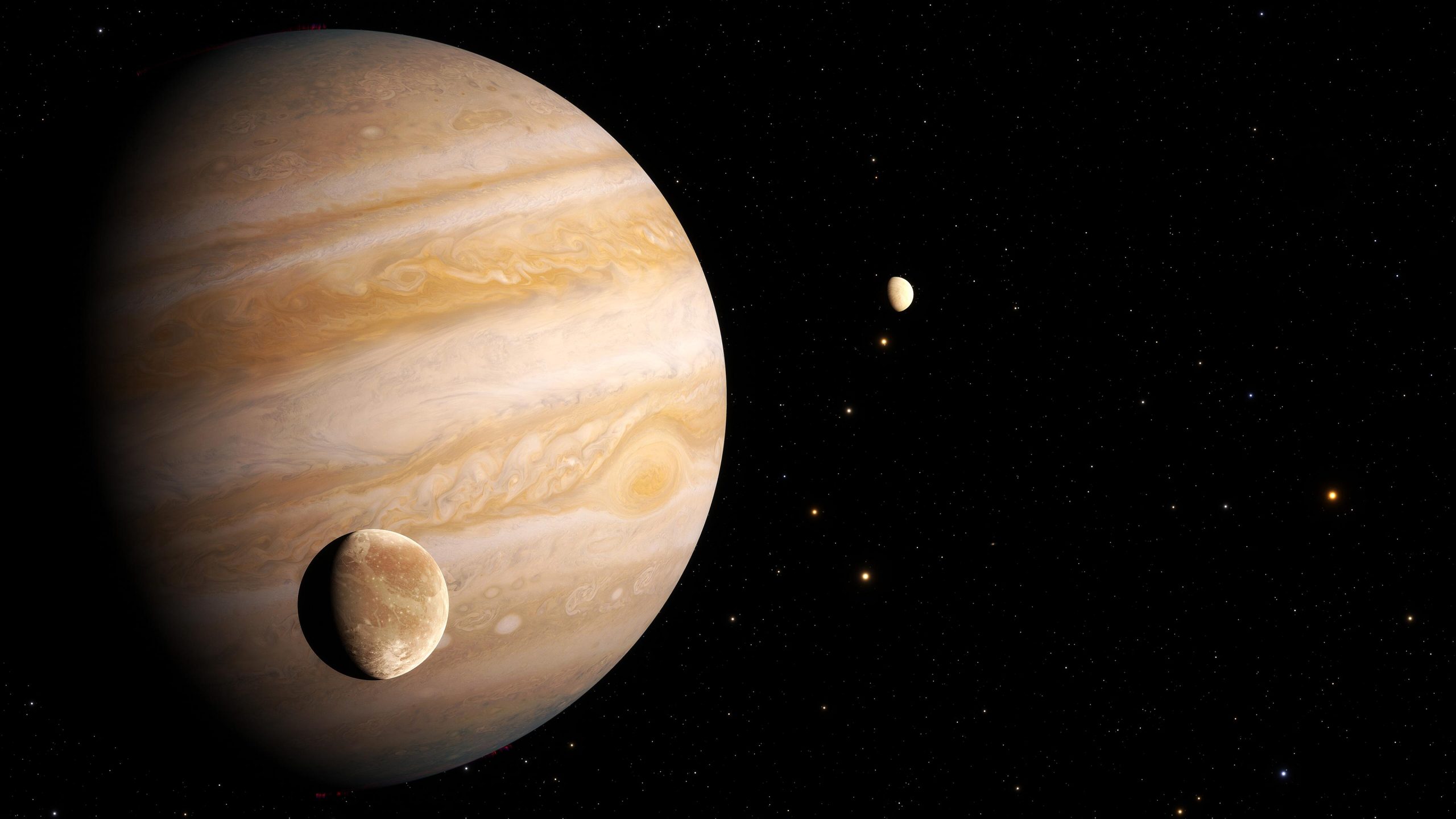
Still, a rain of charged particles from the Sun is enough to turn the ice into water vapor at high noon on Ganymede.
This is the first time such evidence has been found, courtesy of the Hubble Space Telescope’s spectroscopic observations of aurora on Ganymede spanning two decades.
Astronomers have used new and archival datasets from NASA’s Hubble Space Telescope to uncover evidence of water vapor in the atmosphere of Jupiter’s moon Ganymede.
The vapor is present due to the thermal excitation of water molecules from the moon’s icy surface.
Previous research has offered circumstantial evidence for the moon containing more water than all of Earth’s oceans.
For the first time, astronomers have uncovered evidence of water vapor in the atmosphere of Jupiter’s moon Ganymede.This water vapor forms when ice from the moon’s surface sublimates — that is, turns from solid to gas.
Scientists used new and archival datasets from NASA’s Hubble Space Telescope to make the discovery, published in the journal Nature Astronomy.Previous research has offered circumstantial evidence that Ganymede, the largest moon in the solar system, contains more water than all of Earth’s oceans.Astronomers re-examined Hubble observations from the last two decades to find this evidence of water vapor.In 1998, Hubble’s Space Telescope Imaging Spectrograph took the first ultraviolet (UV) images of Ganymede, which revealed colorful ribbons of electrified gas called auroral bands, and provided further evidence that Ganymede has a weak magnetic field.In 1998, Hubble’s Space Telescope Imaging Spectrograph took these first ultraviolet images of Ganymede, which revealed a particular pattern in the observed emissions from the moon’s atmosphere.The team’s analysis combined the data from two instruments: Hubble’s Cosmic Origins Spectrograph in 2018 and archival images from the Space Telescope Imaging Spectrograph (STIS) from 1998 to 2010.
This image presents Jupiter’s moon Ganymede as seen by the NASA’s Hubble Space Telescope in 1996.Ganymede is located half a billion miles (over 600 million km) away, and Hubble can follow changes on the moon and reveal other characteristics at ultraviolet and near-infrared wavelengths.
Astronomers have now used new and archival datasets from Hubble to reveal evidence of water vapor in the atmosphere of Jupiter’s moon Ganymede for the first time, which is present due to the thermal escape of water vapor from the moon’s icy surface.
In fact, the perceived differences in the UV images are directly correlated with where water would be expected in the moon’s atmosphere.
Reference: “A sublimated water atmosphere on Ganymede detected from Hubble Space Telescope observations” by Lorenz Roth, Nickolay Ivchenko, G?The Hubble Space Telescope is a project of international cooperation between NASA and ESA (European Space Agency).The Space Telescope Science Institute (STScI) in Baltimore, Maryland, conducts Hubble science operations.
If the molecular oxygen is derived from water vapor then the hydrogen must have been released to space